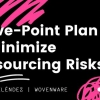Faced with a seemingly endless cycle of disruptive technology and increasingly inflexible budgets, IT executives have their work cut out when it comes to making decisions about how to improve operations and meet demanding business needs without driving costs up. Today's heavy-handed drive for cost savings necessitates that IT services are demonstrably aligned with business priorities. Leaders must be able to show definitive and traceable correlations between IT spend and the business. Yet the speed at which modern IT is expected to respond to new innovations often leads to data collection and analytics being deprioritised, creating a vacuum of insight into the business value of investments. We know this because, when asked to report the costs and performances of their products and services, IT leaders flounder.
For too many years IT management has been stuck on a treadmill. Any progress on cost reductions has been outweighed by increased consumption and bespoke requirement costs. The challenges associated with delivering improved business alignment, reducing build-up of technical debt and leveraging emerging services are well documented:
- Organisations lack transparency into IT usage.
- Businesses have no incentive for business units to reduce consumption.
- Business units act independently and have unique requirements.
- IT accommodates bespoke requests rather than leveraging standard services and economies of scale.
- Cost-saving initiatives focus on ‘how’ services are delivered rather than what is delivered and how it is consumed.
- IT has no influence over bespoke business processes that require unique tooling functionality and increase IT costs.
There are a number of tools that can help organisations overcome these challenges and move towards best practice. Technology business management (TBM) is one of these tools, which can provide improved, automated reporting based on consistent and agreed sources of truth, ensuring that IT leaders are able to understand, compare and analyse costs and usage in infrastructure, applications and services throughout the IT supply chain. This provides the foundation from which to quantify the impact of future investments, make informed decisions and effectively communicate the value of any changes with business partners.
A thoughtful and realistic approach to implementing a tool such as TBM can be the catalyst to drive the organisational change necessary for IT to move from defending cost to demonstrating value. However, like anything, it is important to take the time to understand how TBM could work in practice for your business to get the full benefit. Before embarking upon a TBM journey, IT leaders should review the following steps.
1. Analyse your need. Many organisations already run components of TBM within their control and finance functions, yet this often doesn’t translate into a true end-to-end view of IT. To determine the need for TBM, businesses should ask:
- Do we have a transparent, end-to-end connection between finances, applications and services within a common taxonomy?
- Can we measure our value and demonstrate our credibility as a supplier to the business?
- Can we quickly and easily generate standard reports and analytics that support our decision-making process?
- Can we engage in a meaningful dialogue with the business on the consumption of IT and where/how greater value can be extracted?
- Do we know where to create distinct, client-bespoke solutions and how to fund more innovation?
These functions are vital for driving improvements in cost and service and demonstrating business value. If the majority of your answers were "no", you have identified a gap in operations that should be plugged.
2. Get to know what TBM can and cannot do. Having identified your broad need, you’ll need to do your research. TBM covers a broad church and touches upon the building of service catalogues, rationalising technology portfolios, defining and sourcing the IT supply chain, and understanding and managing demand. Once you understand in the abstract what TBM can do, you’ll begin to spot a whole host of places and ways in which it could help your business.
However, it is important to stay focused on the needs of your individual business. At its heart TBM’s focus is on financial transparency employing a standard taxonomy delivered through software. Take advantage of the aspects of TBM that are relevant to you, but ensure you address the areas of change not covered by TBM, for example how adoption and usage is driven outside of the IT Finance function.
3. Explore different ways of implementing TBM in your organisation. TBM is a path to a performance-based culture for companies that seek continuous improvement and want to drive a more commercial approach to delivering IT Services. As such, it requires full buy-in from a variety of stakeholders across an organisation and it is important to understand which pieces of TBM are relevant at different times and for various stakeholders. Every organisation is different and as such requires a bespoke plan for implementation.
Implementing TBM will require research, consultation and collaboration across departments. However, once in place, your organisation will reap the rewards. After all, the point is to translate the data into faster, better decision-making, making it central to helping businesses move forwards – as well as in the right direction – with transformative results.








